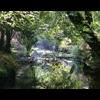-
Content Count
42 -
Joined
-
Last visited
Community Reputation
0 NeutralAbout Dime
-
Rank
Rookie Hunter
Contact Methods
-
Website URL
http://
-
ICQ
0
-
They're not easy from a photo but I would say Chiff Chaff going on the primary (feather) projection (Willow Warblers have longer primary feathers).
-
Its a Slime Mould (Myxomycete) called Mucilago crustacea.
-
Yep, Hawthorn Shieldbug.
-
Looks like an Ectemnius species of Digger Wasp. I don't think they can be done to species level without a good shot of wing venation & microscope work.
-
Its a Hoverfly - Melanostoma sp. (probably M. scalare). Robber-flies are much more robust flies & the Drone-fly is another species of Hoverfly - Eristalis tenax..
-
IDing fungi from photos can be dificult but heres a few 3 & 4 look like the start of the Giant Polypore - Meripilus giganteus 5 & 6 is the Bay Polypore - Polyporus durus 7 is the Beefsteak fungus - Fistulina hepatica 8 could be Jews Ear - Auricularia auricula-judae 10 & 11 are Russula sp. 12 could be Toughshank - Collybia fusipes - need a shot of the whole mushroom. 14 is Chicken of the Woods - Laetiporus sulphureus 15 & 16 is the Amethyst Deciever - Laccaria amethystina 17 reminds me of young Ganoderma pfeifferi 18 are Oyster Mushrooms -
-
Yep, Common Blue Damselfly.
-
The sexes can be alike in the Four-spotted Chaser. Best to look at the anal appendages which aren't visable in Kay's excellent pic.
-
Its a Longhorn Beetle called Rhagium bifasciatum. The larvae live in dead or decaying conifer wood.
-
thanks for that Dime.... would love to see a pic of the catterpillar if anyone could oblige?? http://ukmoths.org.uk/show.php?id=1787
-
Hi Kay. Your white butterfly is a female Orange Tip. Your last is a Peacock.
-
Hi dogs-n-natives. Your moth is an Emperor Moth.
-
They changed them from Psithyrus to Bombus years ago. B. vestalis should have sronger patches of yellow on the side of the abdomen. I think I can make out a black tip to the tail & the abdomen looks curled which points me to B. sylvestris. Identifying Bumble Bees is not easy for most species (& from photos) unless you can look at the genitalia.
-
Hi terrier. Your Beetle is one of the Carrion Beetles - Oiceoptoma thoracica & your Bee looks like one of the Cuckoo Bumble Bees - Bombus sylvestris.
-
Its a Chiff Chaff.


